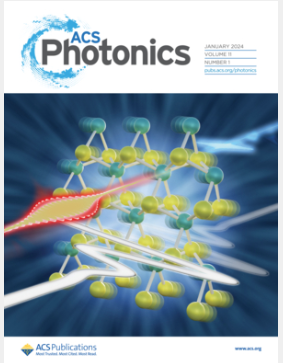Demonstration of Photonic Integrated Circuit Seed Laser System: Toward Space-Based Water Vapor and Methane Differential Absorption Lidar
IF 6.5
1区 物理与天体物理
Q1 MATERIALS SCIENCE, MULTIDISCIPLINARY
引用次数: 0
Abstract
Differential absorption lidar (DIAL) systems are used for accurate vertical profiling and high precision columnar retrievals of molecular components of the atmosphere. Future space-based DIAL systems will enable global monitoring of species crucial to understanding weather and climate systems such as water vapor and methane. DIAL systems require dynamic, high-stability seed laser sources to provide accurate, sensitive measurements by tuning on and off molecular absorption lines. The NASA Langley Research Center is developing a seed laser system for DIAL detection of water vapor and methane based on a core photonic integrated circuit (PIC) subsystem including dual tunable lasers, amplifiers, modulators, photodiodes, and a passive splitter/combiner network on-chip. In this Article, we assemble a breadboard prototype of the seed laser source composed of a first generation PIC, a methane cell, a passive fiber network, and electronic controllers. The seed laser prototype’s performance is demonstrated in terms of PIC laser and modulator performance, online locking accuracy to a methane cell, rapid offset-locking accuracy for the DIAL measurement, and long-term stability. This initial demonstration achieves key performance metrics necessary for space-based DIAL measurements of water vapor and methane, providing a clear path toward a future space-grade system.

光子集成电路种子激光系统的演示:面向天基水汽和甲烷微分吸收激光雷达
差分吸收激光雷达(DIAL)系统用于精确的垂直剖面和大气分子成分的高精度柱状检索。未来的天基DIAL系统将使全球监测对了解天气和气候系统(如水蒸气和甲烷)至关重要的物种成为可能。DIAL系统需要动态、高稳定性的种子激光源,通过调节分子吸收线的开启和关闭来提供精确、灵敏的测量。NASA兰利研究中心正在开发一种用于DIAL探测水蒸气和甲烷的种子激光系统,该系统基于核心光子集成电路(PIC)子系统,包括双可调谐激光器、放大器、调制器、光电二极管和片上无源分配器/组合器网络。在本文中,我们组装了由第一代PIC,甲烷电池,无源光纤网络和电子控制器组成的种子激光源的面包板原型。种子激光器原型的性能在PIC激光器和调制器性能、甲烷电池的在线锁定精度、DIAL测量的快速偏移锁定精度和长期稳定性方面得到了证明。这一初步演示实现了基于空间的DIAL测量水蒸气和甲烷所需的关键性能指标,为未来的空间级系统提供了明确的途径。
本文章由计算机程序翻译,如有差异,请以英文原文为准。
求助全文
约1分钟内获得全文
求助全文
来源期刊

ACS Photonics
NANOSCIENCE & NANOTECHNOLOGY-MATERIALS SCIENCE, MULTIDISCIPLINARY
CiteScore
11.90
自引率
5.70%
发文量
438
审稿时长
2.3 months
期刊介绍:
Published as soon as accepted and summarized in monthly issues, ACS Photonics will publish Research Articles, Letters, Perspectives, and Reviews, to encompass the full scope of published research in this field.
 求助内容:
求助内容: 应助结果提醒方式:
应助结果提醒方式:


